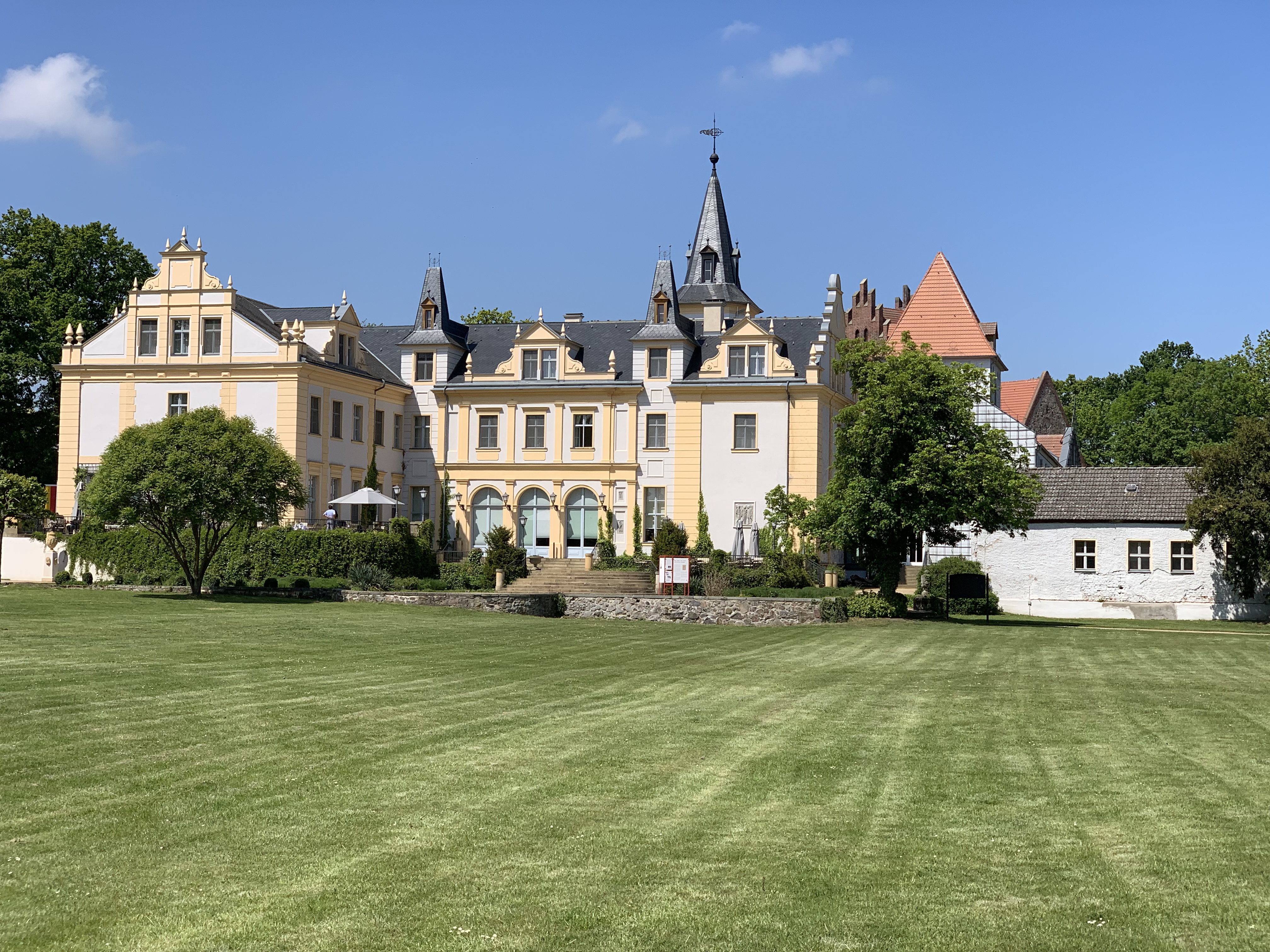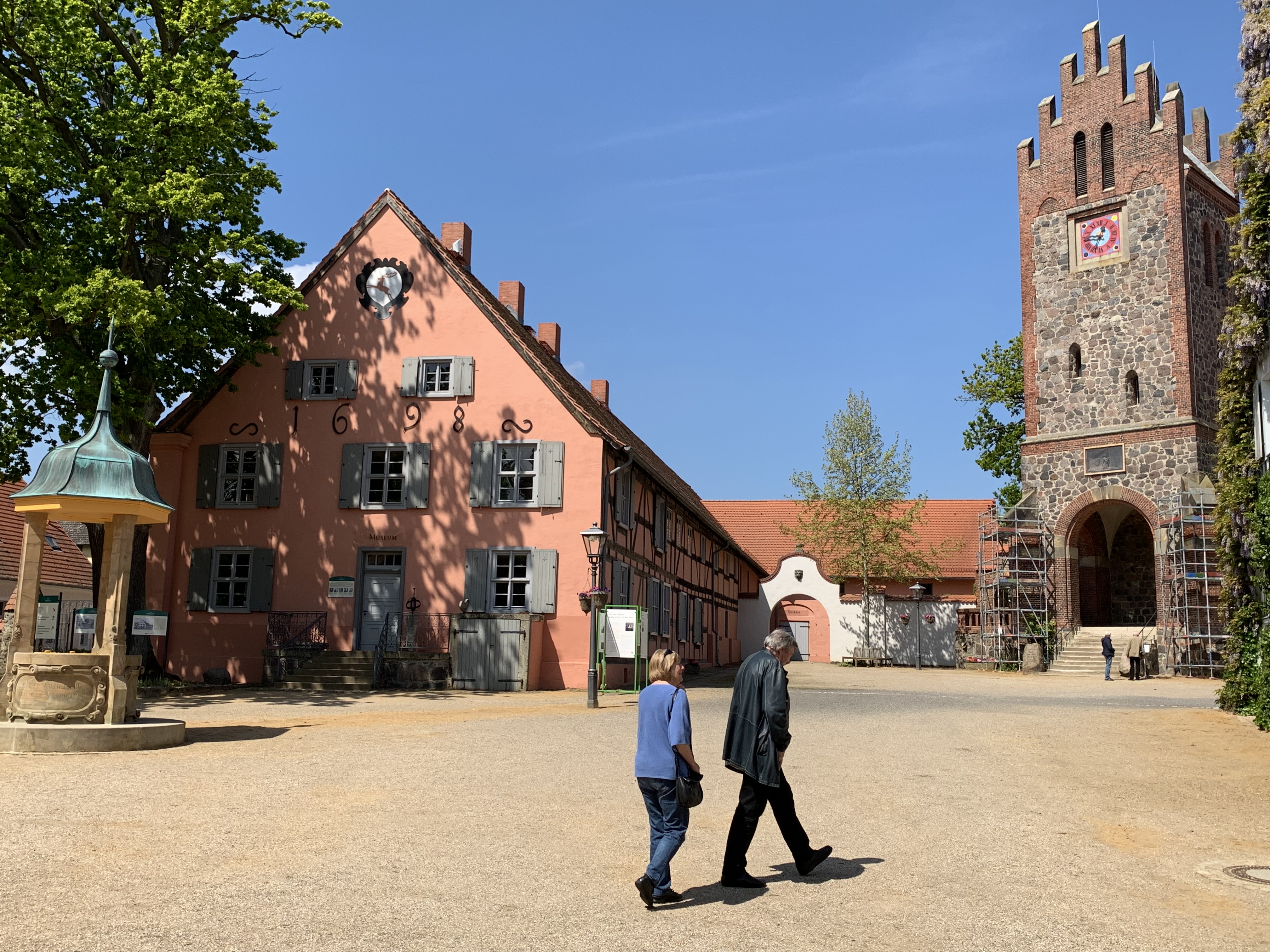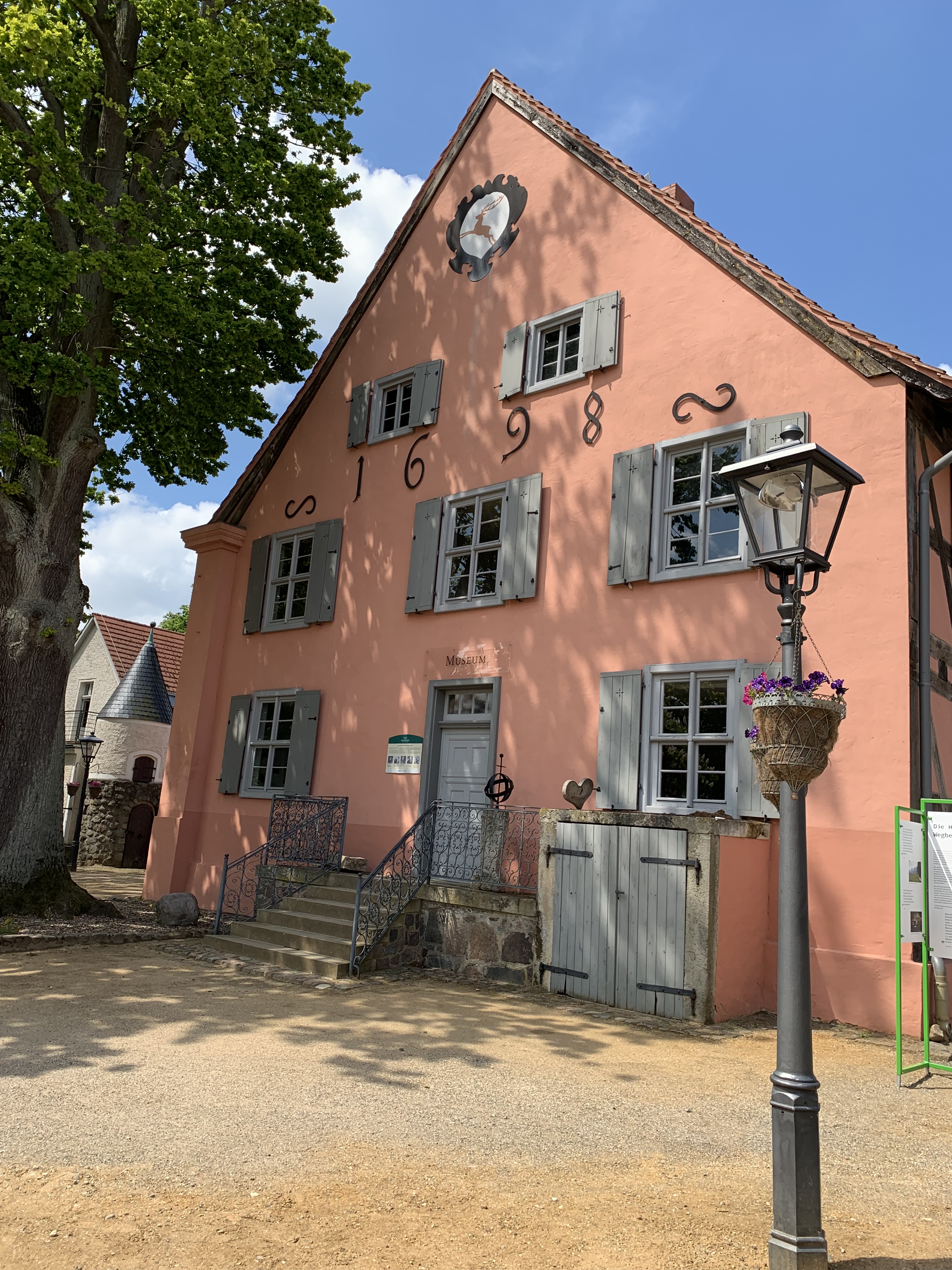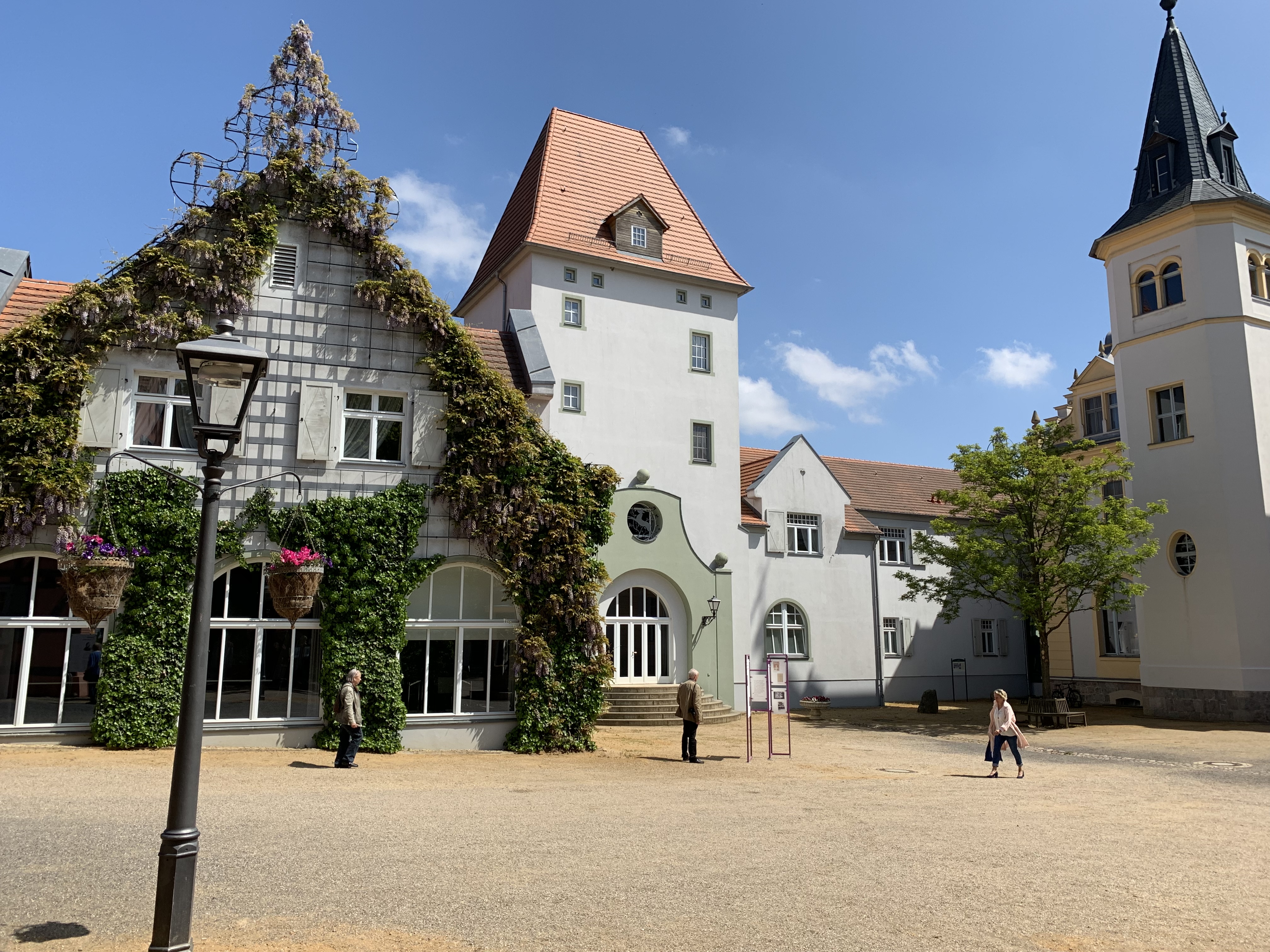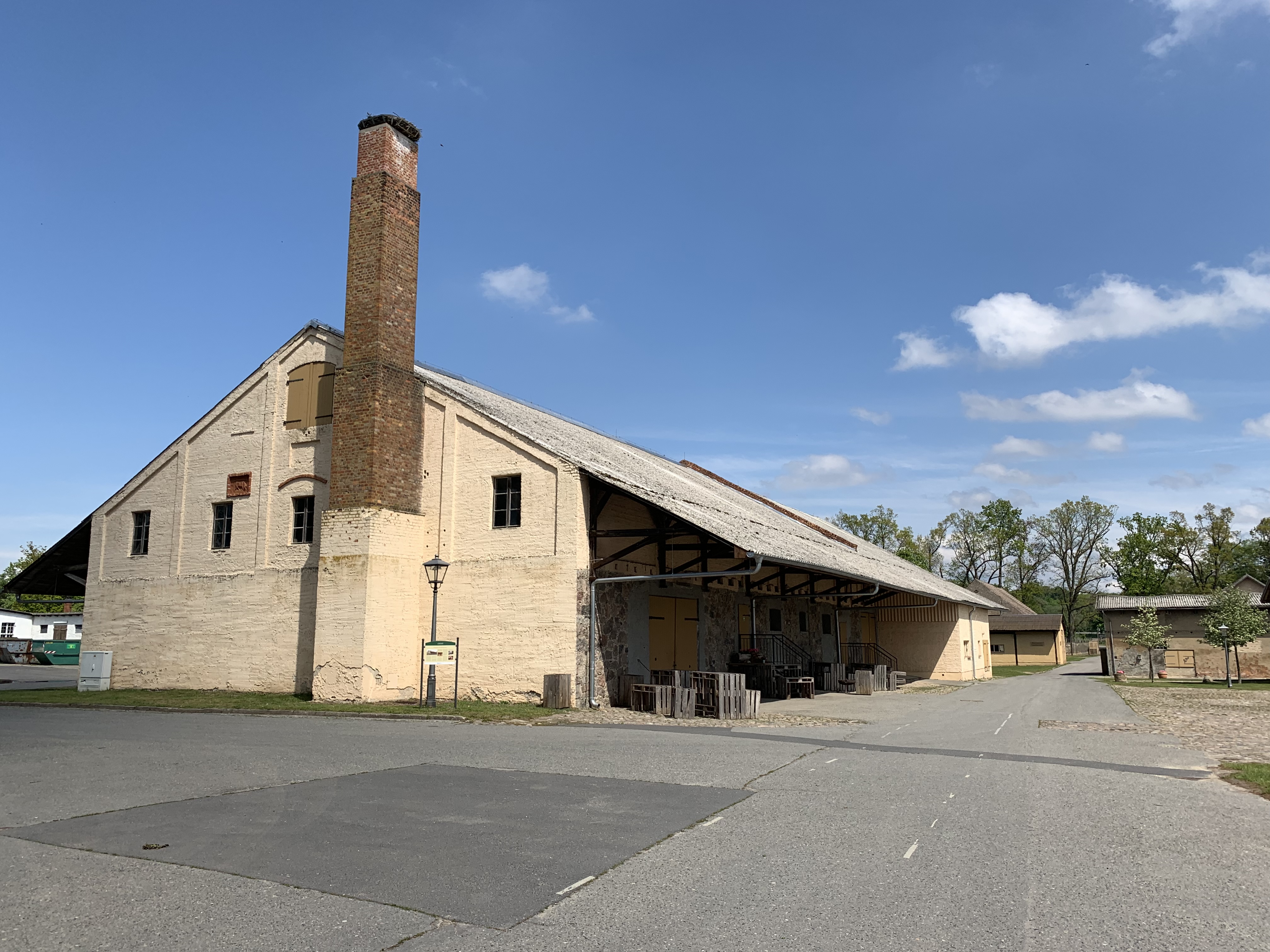It’s easy to think of Germany as a single country. Reunification happened a long time ago, right?
Imagine your country forcefully divided, each half operating under very different forms of government. Children grow up with different values, different expectations. These differences don’t go away because a treaty was signed. They take generations to erase.
On a sunny Berlin morning, we hopped into the car bound for Siegi and Margit’s holiday home at Karwe in the former GDR. The journey took us north and west from Berlin into Brandenburg state.
But we didn’t go directly to Karwe. First, we stopped at a – I’ll call it a large farm, more in this in a moment – to learn about some of the changes wrought by the imposition and later removal of the Soviet socialist system.
Have a look at the photos. This farm is on a different scale than a small family operation. There’s the castle-like owner’s house, the barracks to house workers’ families, many barns for specialized purposes, and even a church! It’s really a kind of feudal community.
Then, it all changed. All property was taken without compensation by the state. Use of the land was centrally planned and executed by local Collectives. This was not necessarily a bad thing, but was sometimes done poorly. Since everyone was guaranteed a job, food and housing, some chose to do little. You might say that things slowed down.
Then, forty years later, everything changed again. Reunification was not an equal partnership. To the more successful, richer, more powerful West, it was a matter of win and lose. Naturally, people thought, everything in the new Germany would be done as it was in the West. And the West had no idea what to do with Collectives.
So a process was begun: how to dispose of confiscated lands and return them to… someone. “Why not the original owners?”, you may wonder. A lot changes in four decades. People die, move away if they can, lose interest. Undoing Collectivism was perhaps harder than establishing it.
I have other stories on this subject: talking to the Archbishop of Prague in 1990 about the difficulties of reclaiming Church properties, visiting the owner of a piano factory in Leipzig in 2001 who told me about regaining control of a generations-old family business.
Maybe someday I’ll blog about those. But for now, I wanted to share some photos of the current state of a part of the former GDR. Differences from the western parts of the country are there to see if you know what to look for.
There are a lot of photos, so I’m going to break them up into multiple postings. Let’s begin with a look at Liebenberg, a former farm that turned into a Collective. The original owner’s heirs could not raise the funds to repurchase the property after reunification, so they partnered with businessmen to refurbish the neglected property and turn it into a conference and event center.
